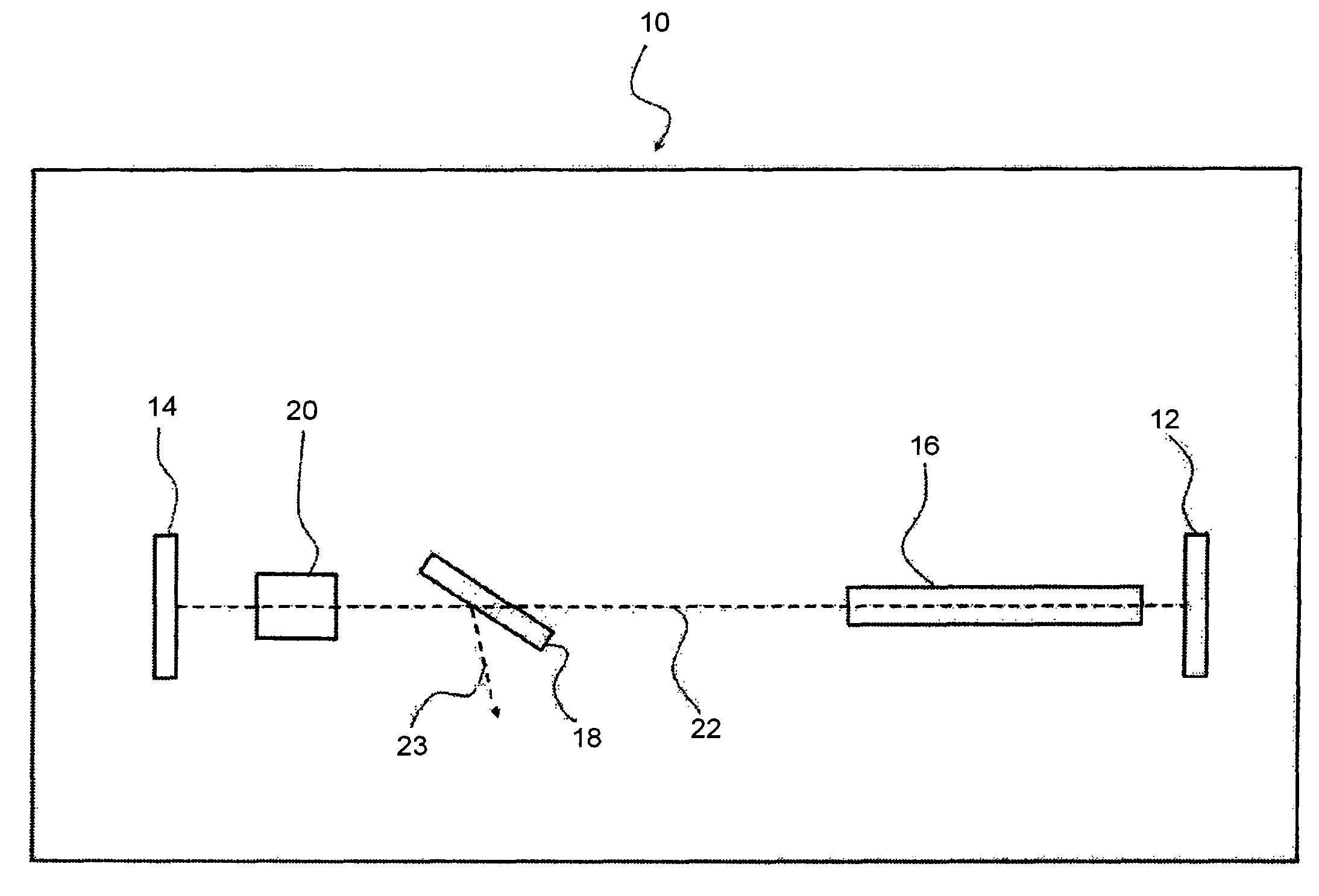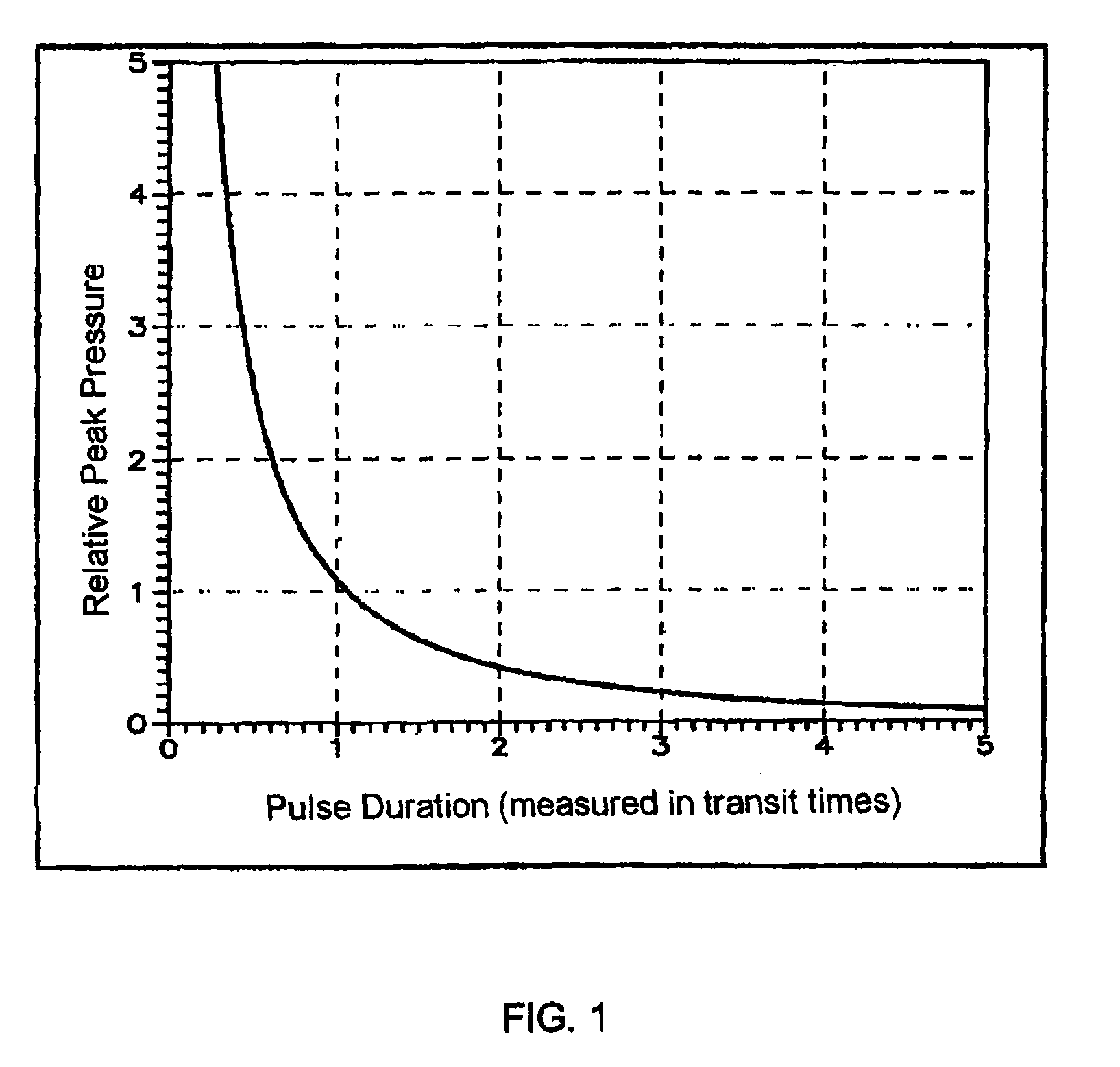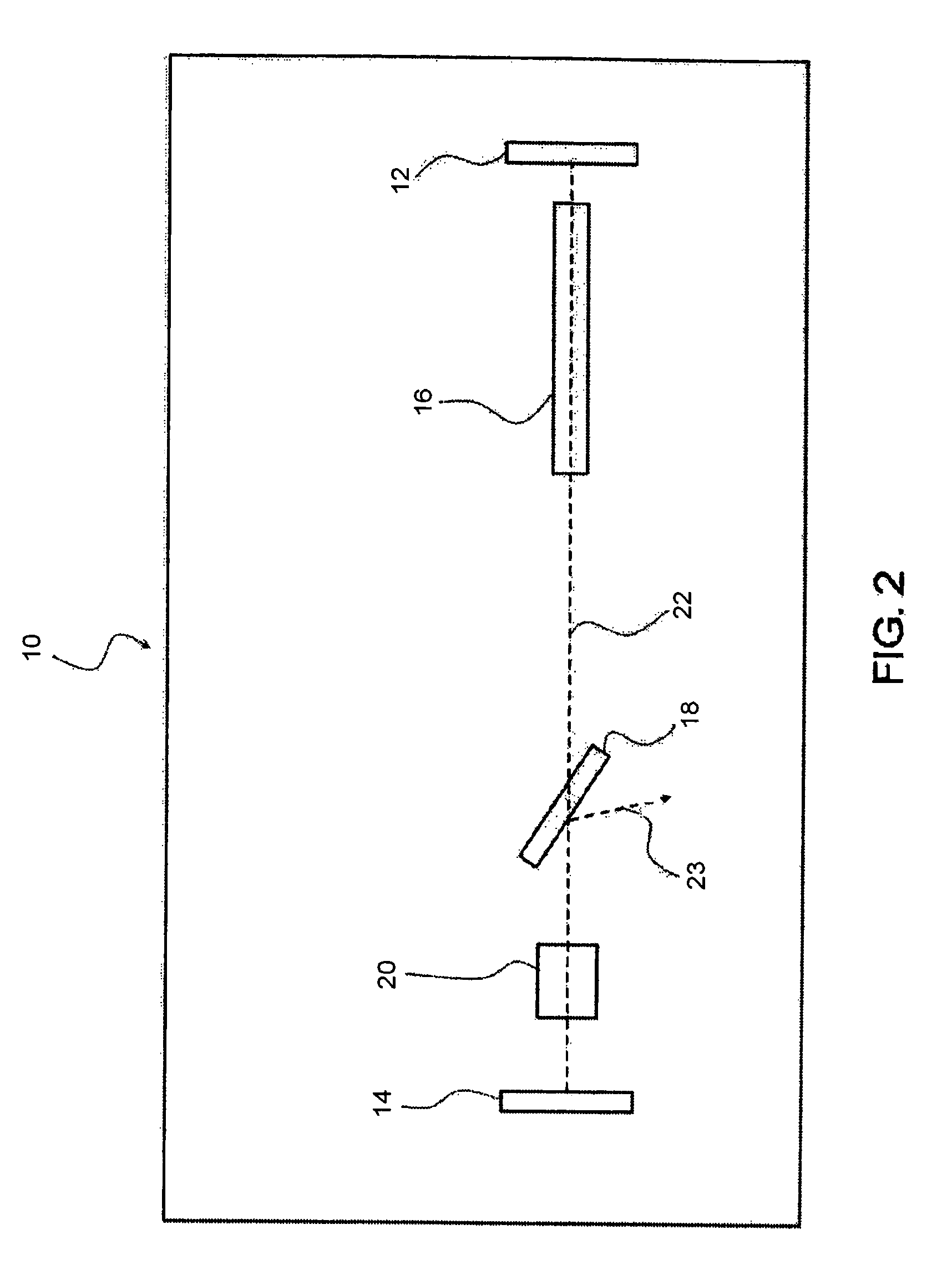Picosecond laser apparatus and methods for its operation and use
a laser and laser technology, applied in the field ofpicosecond laser apparatus and methods for its operation and use, can solve the problems of inability to change from photothermal to photomechanical processes, and inability to operate normally, etc., and achieve the effect of short duration and high energy
- Summary
- Abstract
- Description
- Claims
- Application Information
AI Technical Summary
Benefits of technology
Problems solved by technology
Method used
Image
Examples
example 1
[0081]A laser apparatus as described herein is used to generate pulsed laser energy having a pulse duration of about 100-200 ps with about 500-750 mj / pulse. The laser apparatus includes a resonator with two substantially totally reflective mirrors at opposite ends of its optical axis. An alexandrite crystal lasing medium, a polarizer, and a Pockels cell are positioned along this optical axis. An optical flashlamp is also included for pumping the alexandrite lasing medium, which generates laser energy having a wavelength in the range of 700-950 nm.
[0082]The pulsed laser energy described above is generated by pumping the lasing medium and first establishing a modelocked pulse oscillating in the resonator. In the modelocked pulse operating mode, a time-dependent voltage waveform, as described herein, is applied to the Pockels cell. This waveform results from the sum of a constant baseline voltage and a time-dependent differential voltage. The baseline voltage is in the range of 1000-15...
PUM
 Login to View More
Login to View More Abstract
Description
Claims
Application Information
 Login to View More
Login to View More - R&D
- Intellectual Property
- Life Sciences
- Materials
- Tech Scout
- Unparalleled Data Quality
- Higher Quality Content
- 60% Fewer Hallucinations
Browse by: Latest US Patents, China's latest patents, Technical Efficacy Thesaurus, Application Domain, Technology Topic, Popular Technical Reports.
© 2025 PatSnap. All rights reserved.Legal|Privacy policy|Modern Slavery Act Transparency Statement|Sitemap|About US| Contact US: help@patsnap.com



